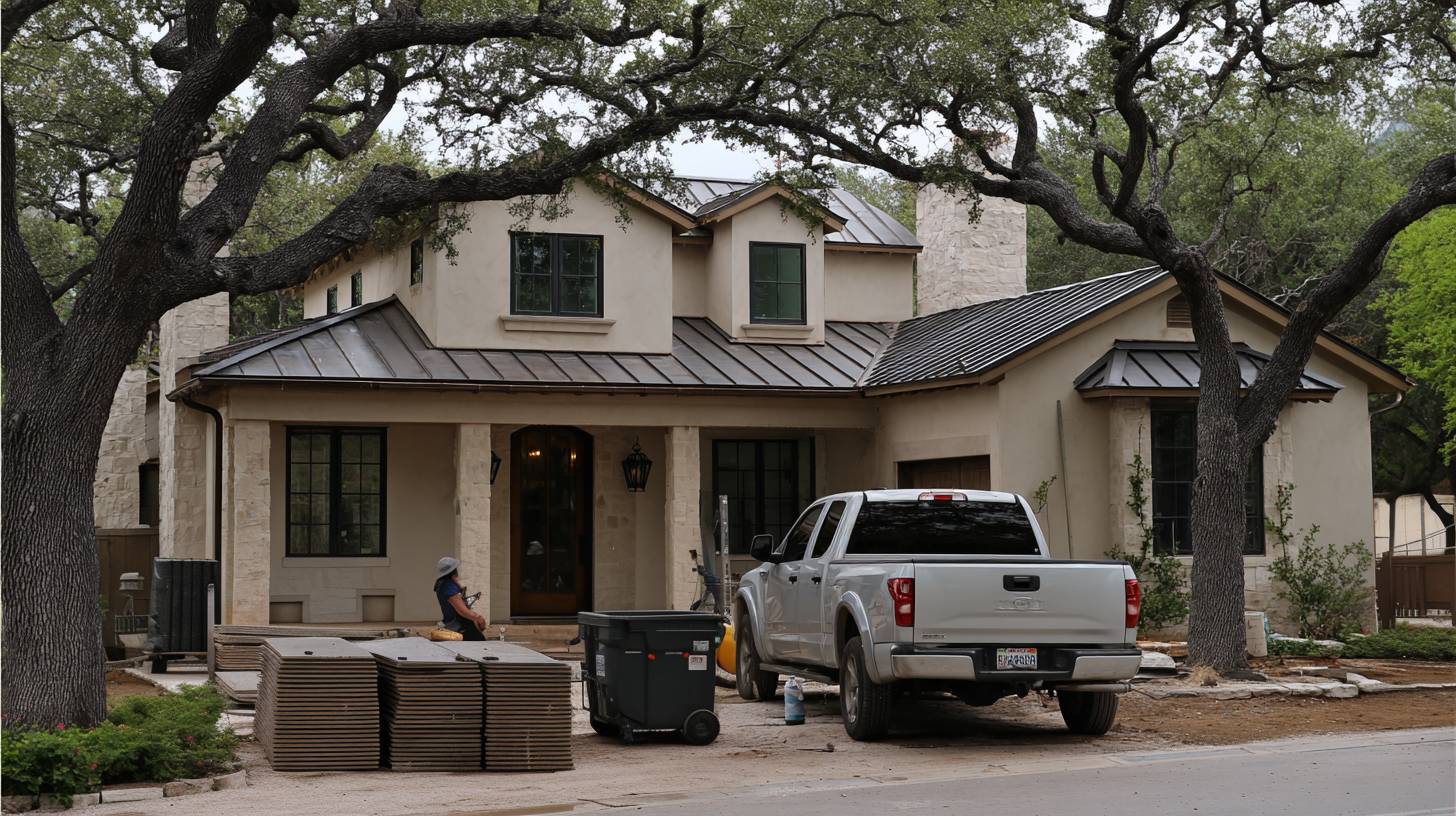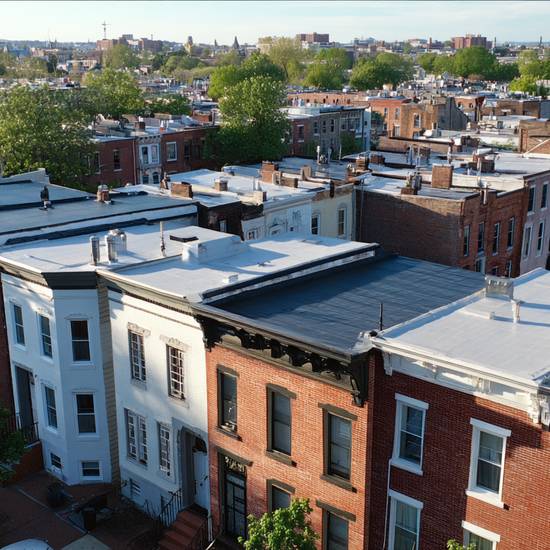If you are searching for a San Antonio roofing remodeling crew, you need pros who plan for 100°F summers, sudden hail, and attic ventilation that actually cools. Older 1960s to 1970s homes and newer Stone Oak builds face different challenges, so materials and installation details must match the house.
This guide explains climate realities, local codes and permits, Texas-tough material options, and how to choose a local roofing contractor. You will see the roofing process step by step, cost ranges compared with national averages, how insurance affects value, and the signs that it is time to schedule work.
San Antonio Roofing Basics
Climate Factors: Heat, Hail, Heavy Rain
South Texas brings high UV, hail cells, and intense downpours. Your crew should specify weather-ready solutions that resist thermal movement, shed rain quickly, and hold up to wind. Proper roof edge flashing, roof seams, and roof drains protect against water damage and costly repairs.
Local Building Codes and Permit Requirements
San Antonio projects must follow local building codes and obtain permits when required by the city’s Development Services Department (DSD). Texas does not issue a statewide roofing license, but you can verify the contractor’s local registration or permit history, business standing, and insurance. Confirm general liability and whether they carry workers’ compensation.
Optional Tip: Ask if they hold a Roofing Contractors Association of Texas (RCAT) voluntary license.
Common Roofing Materials That Work Best in the Region
Asphalt shingles and architectural shingles remain popular for value and speed. Metal roofing performs well in heat and hail and can improve energy efficiency. Tile roofs suit certain neighborhoods and offer a long service life when installed correctly. Discuss roof products and warranty details with your roofing contractor during material selection.
How to Choose a San Antonio Roofing Remodeling Crew
Before you sign, use this focused checklist to compare teams. Each item helps you confirm experience, safety, and fit for your home.
- License, Insurance, and Permits
Ask for current license, liability insurance, and workers’ compensation insurance. Confirm who will pull the building permit and schedule inspections. - Local References and Real Stories
Request and verify their local office address. Speak with satisfied customers and review photo documentation of similar roofing projects. - Detailed Scope and Roofing Process
Insist on a written plan that lists tear-off, deck repairs, dry-in, material installation, roof edge trim, roof joints, and cleanup. Clear steps keep customer expectations aligned. - Crew Supervision and Communication
Ask who is on-site daily, how quality checks are performed, and how you will receive updates. Strong customer service reduces surprises. - Warranty and Aftercare
Get workmanship and manufacturer coverage in writing, including what voids a warranty and how service requests are handled after completion.
What to Expect From the Roofing Remodel Process
1. Roof Inspection and Detailed Estimate
A trusted roofing contractor begins with a thorough inspection that notes cracked shingles, a sagging roof deck, roof style, and flashing details. You should receive photos, measurements, and a line-item estimate tailored to your roofing needs.
2. Tear-Off, Deck Repair, and Dry-In
Crews remove old roofing composition, repair damaged sheathing, and install underlayment to dry-in the structure. This step prevents water entry if the weather changes mid-project.
3. Material Installation
Shingles, metal roofing, or tile are installed to manufacturer's specifications. Architectural shingles, modified bitumen roof systems, or standing seam metal roofs are chosen based on performance, budget, and neighborhood fit. Crews also handle gutter installations and roof edge trim, where included.
4. Cleanup, Final Walkthrough, and Warranty Paperwork
Magnetic sweeps, debris removal, and site checks come before the final walkthrough. Your team should review warranty paperwork, maintenance tips, and contact details for future roof repair service.
How Much Does It Cost to Hire a San Antonio Roofing Remodeling Crew?
In San Antonio, prices depend on roof size, slope, access, and material. Recent local estimates put asphalt shingles around $4 to $6 per square foot, while standing-seam metal often runs about $10 to $17 per square foot. On a mid-size home, that’s roughly $9,000 to $15,000 for shingles and $20,000 to $32,000 for metal, depending on complexity.
Nationally, roof replacements often cost more than San Antonio’s common shingle bids. Recent guides place the U.S. average roof replacement near $9,500 to $16,000 (material and home size can push that up), while broad 2025 summaries show even wider ranges by system. Use these numbers as context, then compare multiple local quotes for an apples-to-apples view.
FAQs About San Antonio Roofing Remodeling Crews
How long does a typical roof installation take in San Antonio?
Many single-family projects finish in one to three days once materials are on-site and the weather cooperates. Tile or complex details can extend timelines.
Do I really need a permit for roof replacement?
If your scope triggers city requirements, yes. Ask your crew to confirm permit rules with the DSD and to schedule required inspections.
Which materials hold up best to Texas weather?
Architectural asphalt shingles remain a strong choice. Metal roofing offers excellent hail and heat performance. Tile roofs deliver longevity when the structure and flashing are correct.
Can crews handle both residential roofing and commercial projects?
Many firms offer residential roofing and commercial roofing services. Clarify crew qualifications for your specific roof system, from asphalt shingle roofs to standing seam metal roofs or modified bitumen.
Get Free Estimates From San Antonio Roofing Pros
Ready to hire a San Antonio roofing remodeling crew without the hassle? Tell us your address, roof age, and goals. Mr. Remodel will match you with licensed, well-reviewed contractors for inspection, repair, or full replacement.
Compare itemized estimates, timelines, and warranty details online. Pick the team that uses quality materials, communicates clearly, and earns strong customer reviews, so your roof looks great and lasts in Texas weather.

























































